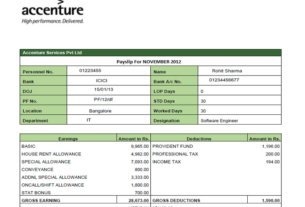Loans come in handy if you have insufficient cash balance to cater to urgent financial needs. Loans can also be used to fund business ideas or even expand an existing business. Regardless of the situation, securing a loan can really be helpful.
However, due to the urgency that comes with some financial needs, one may not take out time to go through the terms and conditions of securing a loan. A wrong step in the loan application process may lead to unexpected outcomes which may be burdensome to the borrower. Fortunately, there is a way out of this situation and that is through debt refinancing.
Debt refinancing involves the substitution of existing debt with a new financing offer with more favorable terms and conditions. Here, the individual or organization settles their outstanding debt through the issuance of a new debt that has more favorable terms. If you are seeking to refinance your debt and you are not sure of how to go about it, you can visit this website for some help.
Types of Refinancing

Some of the available refinancing options include:
Rate-and-Term
This is regarded as the most popular way of refinancing debt. It comes into play when the outstanding debt is repaid with a new debt agreement that has a lower interest rate.
Cash-out
This is used when the value of the asset used as collateral for a loan has increased. The transaction basically involves the withdrawal of the equity or value in the asset in return for a higher credit and interest rate. This means that if the value of an asset increases, you can access the value by obtaining a loan instead of selling it.
You will find that this option is a good one for the borrower as they will still maintain ownership of the collateral.
Cash-in Option
This refinancing option allows one to pay a share of the debt for a reduced loan-to-value ratio. It is basically about smaller debt payments within a period.
Debt Consolidation
Debt Consolidation is also an effective refinancing method. It is used when a borrower secures a loan at a lower rate than the current average rate used by different credit facilities. It requires the business or consumer to apply separately for a different loan with lower rates, thereby paying off the outstanding loan with the fresh one. This arrangement leaves the existing principal with lower interest payments.
Reasons to Refinance Your Debt

The following are some reasons why you may need to refinance your debt:
Lower Interest Rates
Every individual likes favorable terms and conditions, especially with financial transactions. The new loan usually has a lower interest rate than the outstanding debt. With this, you can save some money and this will also enable you to have an early repayment. Repaying your loan in good time improves your credit record and this will help you get loans faster in the future.
Longer Repayment Agreement
With the new loan terms, you can have a significant reduction in the amount repaid monthly and this will make room for a longer period of repayment. However, this is dependent on the lender, type of loan, amount, and creditworthiness. One disadvantage of a longer repayment term is the increased interest rate, especially when compared with a short-term repayment agreement which has a lower interest. The deciding factor here will be your financial needs.
Cash Flow
Reducing your monthly repayment makes room for the availability of cash and this reduces the financial pressure you face. With this, you can easily think of other areas to invest your extra funds.
Important Considerations Before Refinancing Your Loan
The following are some factors to consider:
Purpose
You need to define your aim of refinancing debt to avoid enriching different lending institutions. You need to determine if your aim is to go for lower interest rates, additional cash, or reducing/ increasing the repayment plan.
Credit Score
Most lending institutions request a credit score of over 760 before you can qualify for low-interest rates. Individuals that have lower credit scores can also be offered loans but with higher interest rates. The knowledge of this should make you increase your credit score before applying for loans. If you need tips on how to increase your credit score,
Debt-to-Income Ratio
This is your total monthly payments divided by your total monthly income. Lending institutions are very strict with the debt-to-income ratio and this has led to the high credit score requirements. However, factors like high income, stable work history, or substantial savings can increase one’s chances of securing a loan.
Current Lender
Refinancing your debt requires that you take your time to find a lender with favorable interest rates as well as terms and conditions. If the terms of your current lender aren’t favorable, you can check out other options that have improved offers. If you are not very clear with the process, you can secure the services of a broker or financial advisor.
Refinancing Points
It is important that you compare interest points and rates before you replace a loan. Points are equal to 1% of the total borrowed amount and are usually paid to reduce the interest rate. It is infused into the new loan or repaid at the end of the tenure.
Break-Even Point
When the cost of replacing a loan with another has been covered by your monthly income, it is referred to as the break-even point. It is not a good decision to refinance your debt if your savings cannot take care of the loan. This means that you have to do a proper calculation to be sure you are on the right path.
Purpose
You need to define your aim of refinancing debt to avoid enriching different lending institutions. You need to determine if your aim is to go for lower interest rates, additional cash, or reducing/ increasing the repayment plan.
Types Of Loans That Can Be Refinanced

There are several loans that can be refinanced and some of them include:
Auto Loans
These are secured loans that are linked to your property as collateral. They are used to buy a car but you risk losing your car if you fail to make payments. This type of loan can be distributed by financial institutions like banks, credit unions, online lenders or a car dealership. If you are looking to secure this type of loan from a dealership, you need to know that the interest rate is usually higher than what is obtainable with other lenders.
Student Loans
These are loans offered to students in colleges as well as their families to assist with covering the cost of tertiary education. This type of loan is divided into two types, private student loans, and federal student loans. If you intend to secure this type of loan, we recommend that you go for federal loans as they usually have lower interest rates and also have more favorable repayment terms.
Mortgages
These are loans that are distributed by credit unions, banks, online lenders to assist borrowers with the purchase of a home. This type of loan is linked to your house and in the event of a default in monthly payments, you stand a foreclosure risk. Home Loan Interest rates are favourable since they are referred to as secured loans.
Balloon Mortgage
This type involves a low or nonpayment within the first few months, but then you will be required to clear the balance at once. It is considered a high-risk credit due to its structure. The “balloon payment” which is expected to cover the accrued interest and principal may not be available at the required time for the borrower and this will attract penalties.
Conclusion
Refinancing a loan is one way to reduce the financial pressure that comes with repaying a debt. It also allows you to explore available options before choosing a lender with favorable repayment interest as well as terms and conditions. This article has discussed relevant information that may be helpful in your decision-making process. So make the best of this information!



